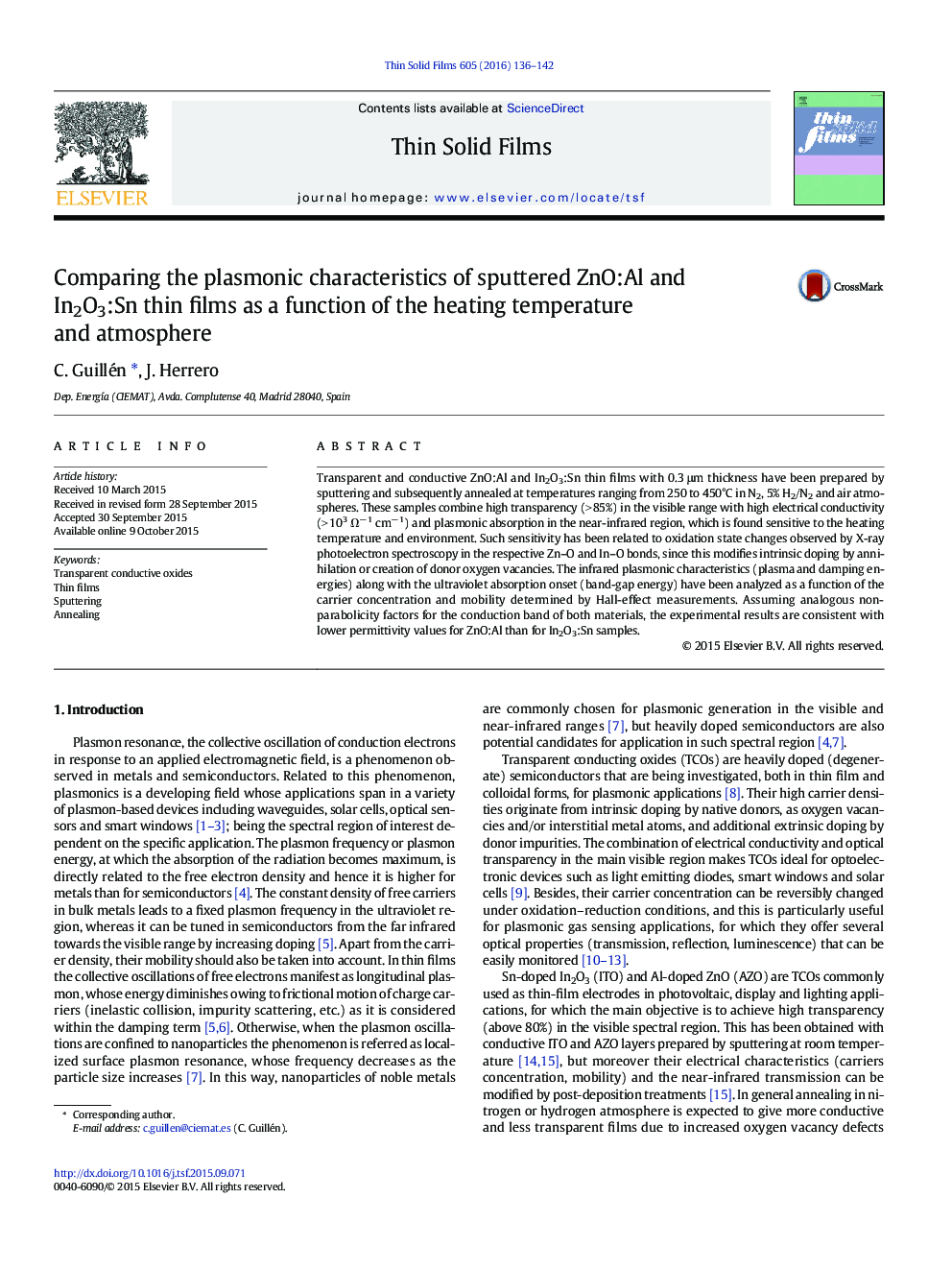| Article ID | Journal | Published Year | Pages | File Type |
|---|---|---|---|---|
| 1664129 | Thin Solid Films | 2016 | 7 Pages |
Abstract
Transparent and conductive ZnO:Al and In2O3:Sn thin films with 0.3 μm thickness have been prepared by sputtering and subsequently annealed at temperatures ranging from 250 to 450°C in N2, 5% H2/N2 and air atmospheres. These samples combine high transparency (> 85%) in the visible range with high electrical conductivity (> 103 Ωâ 1 cmâ 1) and plasmonic absorption in the near-infrared region, which is found sensitive to the heating temperature and environment. Such sensitivity has been related to oxidation state changes observed by X-ray photoelectron spectroscopy in the respective Zn-O and In-O bonds, since this modifies intrinsic doping by annihilation or creation of donor oxygen vacancies. The infrared plasmonic characteristics (plasma and damping energies) along with the ultraviolet absorption onset (band-gap energy) have been analyzed as a function of the carrier concentration and mobility determined by Hall-effect measurements. Assuming analogous non-parabolicity factors for the conduction band of both materials, the experimental results are consistent with lower permittivity values for ZnO:Al than for In2O3:Sn samples.
Related Topics
Physical Sciences and Engineering
Materials Science
Nanotechnology
Authors
C. Guillén, J. Herrero,
